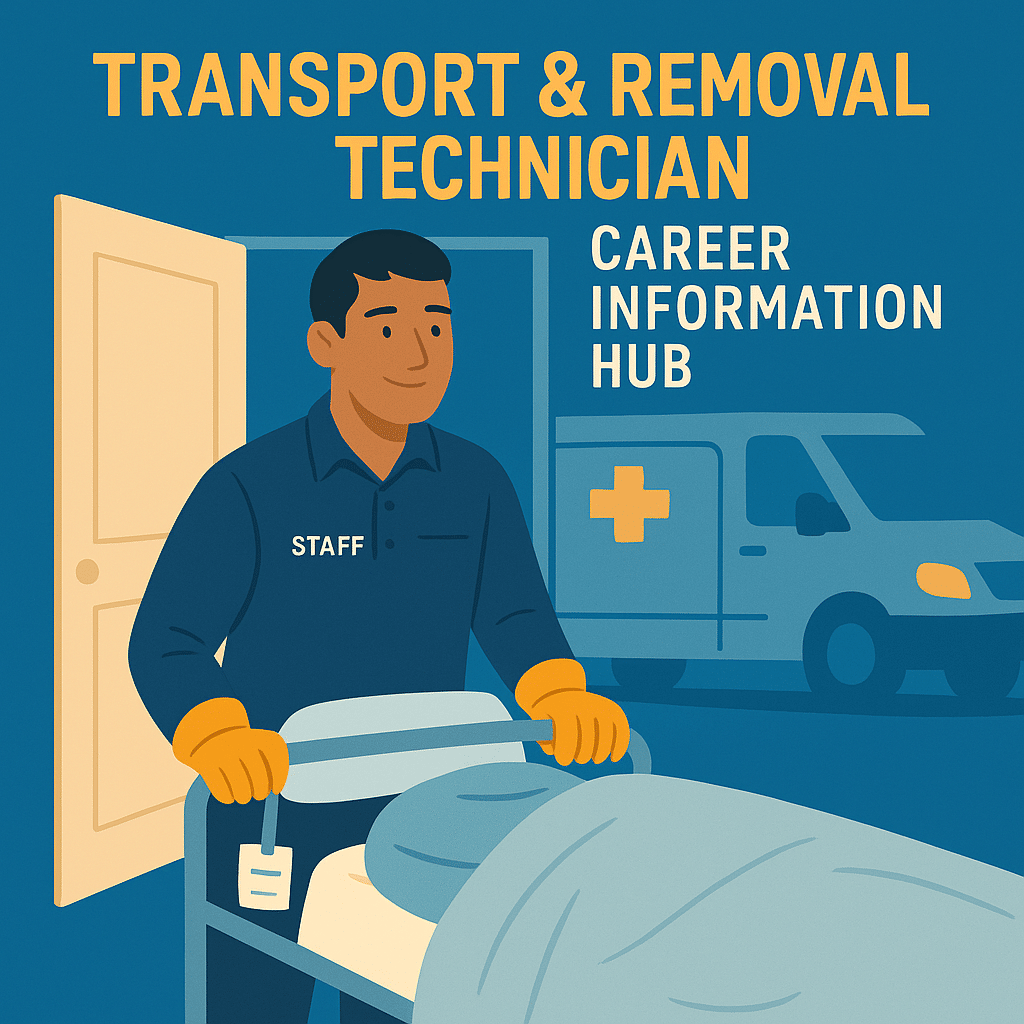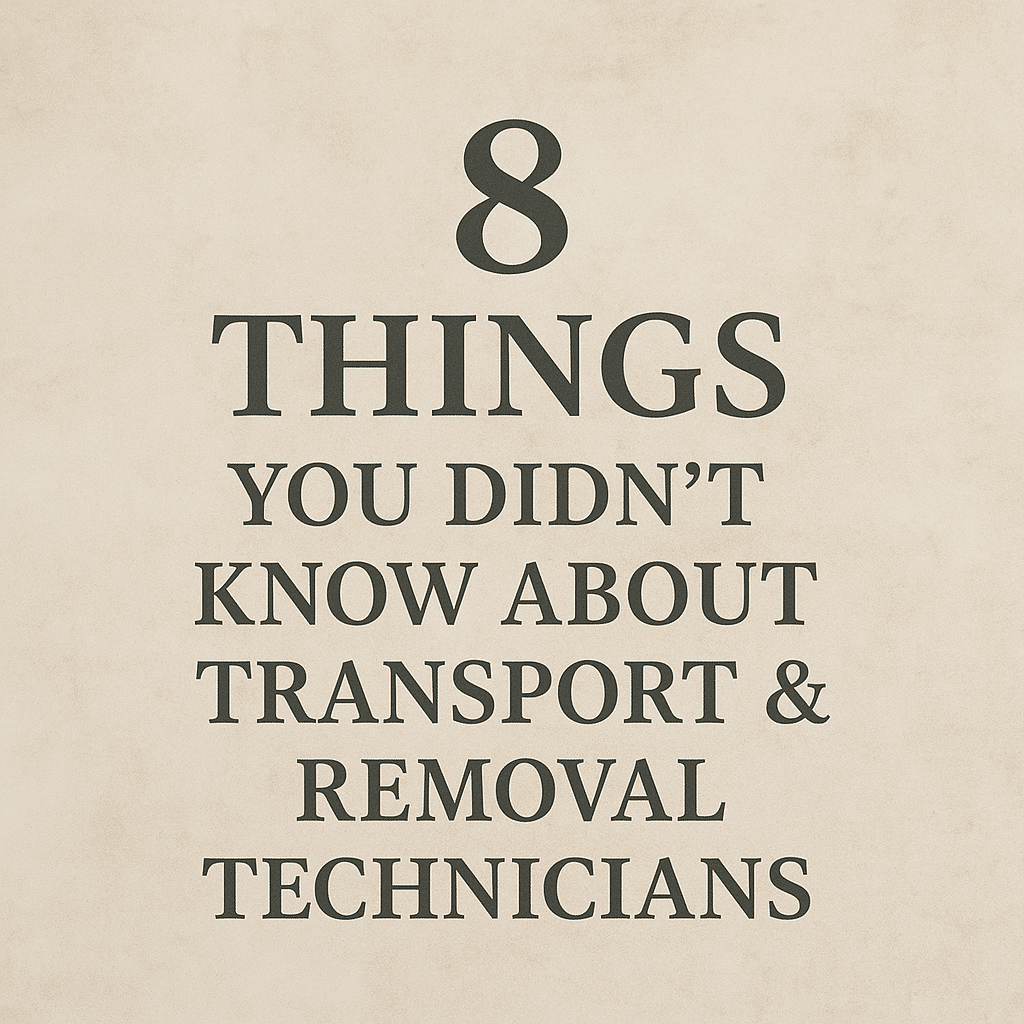The True Last Responder
The Transport & Removal Technician Career Information Hub
Transport and removal technicians are often the first professionals to care for someone after they pass. They handle transfers from homes, hospitals, and care facilities with professionalism, respect, and calm. This career is ideal for dependable, detail-minded people who want to provide quiet support during life’s most sensitive moments.

Key Things To Know
Transport & Removal Technicians work behind the scenes, but their impact is visible in every funeral service that follows.
- They are often first on the scene: Technicians may respond to homes, hospitals, nursing facilities, or accident sites, offering calm and professional care from the beginning.
- The role is physically demanding: Lifting and transferring bodies from tight spaces, stairs, or unusual positions is a routine part of the job and requires strength and awareness.
- They work for a variety of employers: Technicians may be employed by funeral homes, cremation providers, mortuary transport companies, or medical examiner offices.
- They must follow chain-of-custody protocols: Proper identification and documentation are critical during removal and transport to ensure legal compliance and family confidence.
- Schedules can include nights and weekends: Many technicians are on-call and respond to deaths at all hours, often with little notice.
- They often work in pairs or small teams: Depending on the setting, removals may be done solo, but most employers prioritize safety and professionalism by assigning teams.
- They see families at emotionally intense moments: Technicians must be steady and respectful when interacting with people who are grieving or in shock.
- They set the tone for the funeral home: Although they do not plan services, their demeanor and professionalism shape the family’s first impression.
Why Choose This Career?
This path is ideal for those who want to serve families quietly and meaningfully at one of life’s most difficult turning points.
- You help families begin the healing process: By treating the deceased with care and presenting a calm presence, you support families from the very first step.
- You play an essential role in the funeral process: Every service begins with someone like you doing the work with respect and precision.
- You can start with minimal education requirements: This career often provides on-the-job training, making it an accessible entry point into the funeral profession.
- You’ll learn valuable teamwork and service skills: Working in removal builds communication, coordination, and empathy that translate across many funeral-related roles.
- You’ll never have the same day twice: The job includes a variety of environments, people, and logistical challenges that keep each shift unique.
Job Responsibilities
Transport & Removal Technicians are responsible for the secure and respectful removal and transport of deceased individuals.
- Respond to death calls promptly: Technicians are dispatched to private homes, hospitals, care facilities, or public spaces to pick up the deceased.
- Verify identity and complete documentation: Ensure correct identification and legal paperwork are completed before transport begins.
- Prepare and secure the body for transport: Use professional equipment and techniques to transfer the deceased while maintaining dignity and safety.
- Drive transport vehicles safely and professionally: Vehicles must be clean, presentable, and handled with attention to traffic laws and time sensitivity.
- Maintain communication with dispatch or funeral staff: Updates are often required in real time to support the family’s experience and service planning.
- Handle sensitive situations with care: Families may be present or in distress during a removal, and technicians must remain calm and respectful.
- Sanitize and maintain equipment: Vehicles, stretchers, and protective gear must be cleaned regularly and kept in good working condition.
Education and Certification Requirements
Becoming a Transport & Removal Technician usually involves basic training, though some employers may require specialized certifications.
- Formal education requirements are minimal: Most employers require a high school diploma or equivalent. A valid driver’s license and clean driving record are usually required.
- On-the-job training is common: New technicians are often trained by experienced staff to learn protocols, paperwork, and proper lifting techniques.
- Some states may require additional training: Depending on local laws, technicians may need certifications in body handling, biohazard safety, or infectious disease control.
- Safety and lifting certification may be required: Employers may offer or require training in OSHA compliance, PPE use, and safe body transport procedures.
- CPR or first aid training may be a plus: While not typically required, emergency medical knowledge can be helpful in certain situations.
How To Get Started
This role is often the first step for those entering the funeral profession, offering valuable experience in both logistics and care.
- Search for job openings at funeral homes or transport companies: Entry-level positions are often available and may include paid training.
- Make sure you meet basic requirements: A valid driver’s license, physical ability to lift and carry, and reliable availability are essential.
- Be prepared for irregular hours: Flexibility and willingness to be on-call are important traits in this field.
- Highlight customer service or medical experience: If you’ve worked in caregiving, hospitality, or emergency response, those skills can translate well.
- Ask about advancement opportunities: Many removal techs go on to become funeral directors, embalmers, or other licensed professionals.
Common Myths
This role is often misunderstood. Let’s clear up some common misconceptions about what Transport & Removal Technicians really do.
Myth: It’s just driving a van
This job involves far more than transportation. Technicians handle logistics, safety, documentation, and emotional situations with care and professionalism.
Myth: You never interact with families
In reality, many removals happen in private homes or hospital rooms where families are present. The technician is often the first face they see.
Myth: You don’t need any training
Most employers provide hands-on training, and many expect knowledge of safety protocols, proper lifting, and respectful handling of the deceased.
Myth: The job is always depressing
While the work is serious, many professionals find meaning in providing quiet care and comfort when it matters most.
Myth: There’s no room for growth
Many people begin their careers in removal and move into other areas of funeral service after gaining experience and exposure.
What Makes Someone A Good Fit
This role is a match for people who value respect, professionalism, and quiet service.
- You are calm under pressure: Removals can be emotionally or logistically challenging, and you need to stay composed and focused.
- You have physical strength and endurance: The work involves frequent lifting and maneuvering in confined or awkward spaces.
- You are emotionally steady and respectful: Families may be grieving or in shock. You provide calm, compassionate presence without needing to say much.
- You are dependable and prompt: Timeliness and professionalism are critical, especially during sensitive or high-pressure calls.
- You are comfortable working behind the scenes: If you take pride in doing important work without needing the spotlight, this is a meaningful fit.
Articles
Frequently Asked Questions
Here are some of the most common questions people ask about becoming a Transport & Removal Technician.
Disclaimer: The information provided on this website and by Buried in Work is for general informational purposes only and should not be considered legal advice. Please consult with a qualified attorney or subject matter expert for advice specific to your situation.

